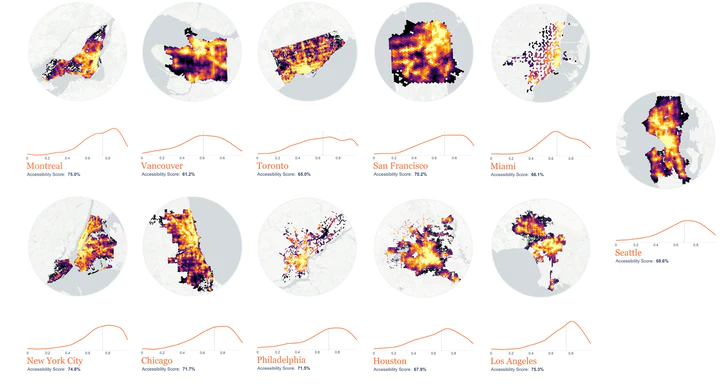Who's got Access?

Access to Urban Infrastructure is Unequally Distributed in Cities across the World
Our research proposes a reproducible framework to quantify and address socio-economic inequalities in accessibility to urban services.
Achieving inclusion and fairness in policy interventions within cities has become a central objective for urban planners and policymakers around the world. Our research presents a computational framework to evaluate distributional inequalities in access to urban infrastructure in more than 50 cities across the world. For cities where block level demographic data is available, our framework uncovers these inequalities further, and provides insight into levels of accessibility afforded by different urban demographics.
Key Findings
- Inequalities appear proportional to growth processes in cities across the world.
- In North American cities, levels of accessibility are systematically lower for populations who have a larger share of minorities, earn less, and have a relatively lower number of individuals with a university degree.
- Our computational framework may be instrumental in supporting cities to devise targeted measures for addressing inequalities for certain underprivileged communities.